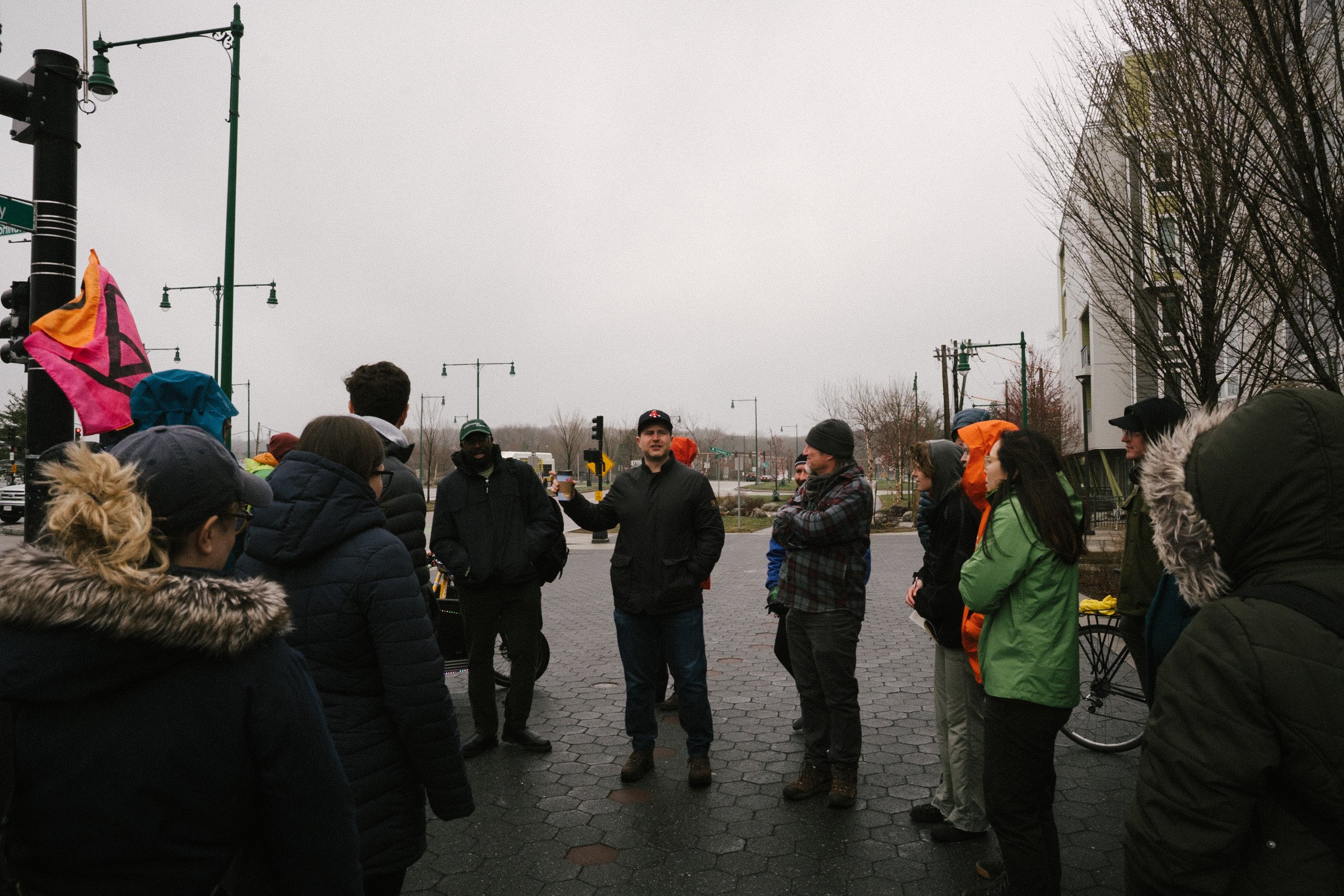hyde park avenue
Mayor Wu’s administration has held meetings, made promises, and watched a man die — but Hyde Park Avenue is just as dangerous as the day she took office.
six years of broken promises.
For six years, neighbors who use Hyde Park Daily have asked for the same thing: slower traffic, safer and predictable conditions for pedestrians, and infrastructure that allows buses and bikes to move through Forest Hills without incurring daily risk. Thus far, the administration has ignored requests for basic infrastructure and improved transit on a major Boston thoroughfare.
2019 – Promises Made
The Boston Transportation Department (BTD) launches the Hyde Park Avenue Multimodal Corridor project, identifying the street as high-crash and overdue for safety improvements. Early outreach and design work culminate in a preliminary 30% plan: one travel lane each way, plus protected bike and bus priority lanes. Community response is largely positive. But momentum fades, and the project stalls before any changes hit the ground.
2020 – Momentum Interrupted
At a February open house, city officials present bold ideas: transit-priority signals, continuous bike lanes, safer crossings for one of Boston’s busiest bus corridors. But by March, COVID-19 hits. Despite having reached a significant design milestone, the City suspends all progress. The project remains frozen for nearly two years
2022 – Another Restart, Another Pause
In spring 2022, BTD resumes community engagement. Residents echo the same concerns as 2019: unsafe crossings, high speeds, no bus or bike infrastructure. Staff recycle the 30% design and seek more feedback. By fall, the project is sidelined again — this time because BTD staff are reassigned to MBTA crisis management with the closure of the Orange Line. Hyde Park Avenue is once again deprioritized.
2023 – Folded into a Bigger Plan
In October, BTD incorporates Hyde Park Avenue into the broader Southwest Boston Transit Action Plan (SWBTAP), covering Roslindale, Hyde Park, and West Roxbury. Officials promise better coordination and renewed engagement. But throughout the year, there are no public meetings, no design updates, and no safety improvements on the corridor. Residents hear nothing; the thoroughfare worsens with traffic enforcement seemingly suspended after Covid.
2024 – a preventable death reignites the fight
February–June 2024: BTD restarts planning quietly, showcasing materials at unrelated city events and conducting bus rider surveys. Residents attend informal office hours and view draft concepts privately, all of which include reducing the road to one lane in each direction with protected bike infrastructure. A public meeting to unveil these designs is scheduled for May — then delayed to June — then canceled entirely.
May 2024: The Forest Hills Neighborhood Association compiles a 32-page report on deteriorating traffic and safety conditions in Forest Hills and around Hyde Park Avenue, asking for immediate action to prevent injury and death.
October 2024: On October 12, Glenn Inghram, a beloved Hyde Park gardener, is struck and killed by an MBTA bus while crossing in a marked crosswalk near Forest Hills. Inghram’s family announces a wrongful death lawsuit. Neighbors organize: 800 residents of Forest Hills and nearby neighborhoods demand immediate fixes after five years of delays. The city responds pitifully, with tweaks to traffic signals.
December 11: More than a hundred neighbors crowd a public meeting at the Boston Teachers Union School on a rainy night for a community outreach meeting, expecting to finally see design plans. Instead, BTD tells residents that no plans will be shared. Staff ask residents to place sticky notes on maps instead and to repeat the pain points they have been repeating for years.
2025 – The Administration abandons hyde park avenue
January 2025: More than 700 neighbors co-sign an open letter to Mayor Wu and Chief of Streets Jascha Franklin-Hodge asking for an end to delays. The letter calls out the City’s plan to spend 2025 gathering more feedback on a project that already reached 30% design six years earlier. The authors demand action: tactical fixes now, not perfection later.
April 12, 2025: Residents organize a “Safety Walk” along the most dangerous stretch of Hyde Park Avenue. Joined by planners and elected officials, participants highlight unsafe signal timing, missing bike infrastructure, and inconsistent crosswalks. City staff promise small changes — restriping, curb ramps, signal tweaks — to accompany planned fall repaving.
May 21, 2025: At the third open house in six months, BTD presents two watered-down “early action” options for fall repaving — one that would remove a traffic lane, one that would not. Neither includes protected bike lanes or meaningful transit upgrades. City officials urge residents to weigh in. They do: 365 people submit written comments calling for the safer option. After six years of delay and a preventable death, the community speaks with one voice: Do something.
July 2025: Through intermediaries, the Wu administration signals there will be no design changes after all — just more outreach, more delay. No explanation is offered. No new timeline is given. After six years, three rounds of planning, a fatal crash, and hundreds of pleas, residents are left to ask: who exactly is the City still waiting to hear from?
